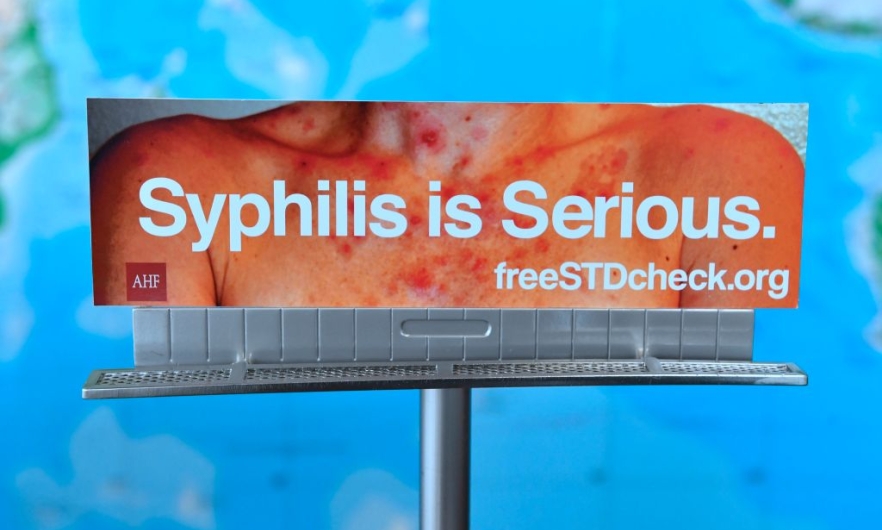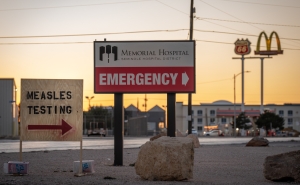The U.S. Syphilis Spike Has Been Brewing for Decades

Syphilis cases in the U.S. are skyrocketing even as rates for other STIs like gonorrhea and chlamydia are flat or declining.
Alarming numbers released by the CDC are the latest marker in a decades-long rise of the disease, showing the highest case numbers since the 1950s.
From 2018 to 2022, reported cases rose 80% in the U.S. In 2022, cases of congenital syphilis among newborns were 10 times higher than in 2012, at 3,700 cases. Black and American Indian populations bear a disproportionate share of the burden—and women are making up a rising share of cases.
Left untreated, the disease can be devastating, causing serious heart and brain damage, blindness, deafness, and paralysis. Congenital cases can cause miscarriage, lifelong medical issues, and infant death.
Khalil Ghanem, MD, PhD ’08, a professor of Medicine with a joint appointment in Population, Family and Reproductive Health, discusses how the country—which just decades ago seemed on the brink of defeating syphilis—lost momentum.
How is syphilis transmitted, and what are the symptoms?
Syphilis can be transmitted through sexual contact (anal, genital, or oral), from mother to fetus, and in very rare cases, through blood transfusion or organ transplantation. Only during its early stages—around the first four months—can it be transmitted sexually, but it can be passed to a fetus at any stage.
The first clinical signs are known as primary syphilis, which usually don’t show up until two to six weeks after infection. In sexually transmitted syphilis, the first symptoms are ulcers at the site of exposure. They are generally painless, and therefore much harder to detect inside the vagina or anus than on the penis.
The immune system usually kicks in and clears those symptoms—but it doesn’t cure the disease—and eventually it escalates to secondary syphilis. At this stage, the organism is replicating very quickly and affecting many organs in the body. It can bring on fevers, skin lesions, mucosal lesions, and even hepatitis. Again, the immune system can clear these symptoms and the infection reaches its next stage: latent syphilis.
Sixty percent of people with latent syphilis will never have symptoms again. The other 40% suffer devastating complications including neurological problems, cardiovascular issues, and inflammatory masses all over the body. Overall, 10% of patients who are not treated for syphilis wind up dying from this infection.
Currently, there’s no way of knowing who will fall into what category.
How are congenital cases different from adult cases?
It's the same [disease] process, but in a tiny person whose immune system is not yet functional.
The disease can lead to miscarriage or stillbirth, and up to 40% of babies born to women with untreated syphilis die from the infection.
If the infant is born, early manifestations include horrifying skin peeling, enlarged liver and spleen, and impacts on the blood and central nervous system.
A newborn with syphilis may only present symptoms years later, when the disease can cause incredibly brittle bones that essentially break when the child begins to put on weight. And there’s nothing you can do about it if the disease reaches that stage without prior treatment.
Every case of congenital syphilis in this country is a black mark on public health. The reality is that a lot of pregnant patients are not seeking care until late or don’t have access to care—and the later you wait, the more likely you are to have transmission to the fetus.
How is syphilis treated?
Syphilis is a cruel disease. Left untreated, it can affect any and every organ system and evade the immune response. Penicillin and other antibiotics can cure it, but it’s essential to treat it early when the least damage has been done.
There is only one drug recommended for the treatment of uncomplicated syphilis during pregnancy: benzathine penicillin G (BPG), and we are experiencing a national shortage of it. The FDA has temporarily approved the importation and sale of the nearly identical French version of the drug to shore up supplies—but this episode highlights the country’s dependence on a single manufacturer for BPG and the dire implications when that manufacturer experiences production issues.
Why is syphilis on the rise in the U.S. now?
The syphilis rates in the U.S. started going up in 2000 and have not stopped.
Initially, this increase was mainly among men who have sex with men. Today, we have parallel epidemics in two sexual networks: one in MSM, and one among heterosexuals, which has been linked to drug use. The rise of syphilis cases among women is now surpassing the rise among men.
It’s harder to break down by region. We have good data from cities but very poor data from rural areas, where there’s less access to health care and more missed diagnoses. But there have been multiple outbreaks reported in rural areas.
What changed in 2000?
In the late 1990s, there was a belief that the U.S. was on track to beat syphilis—in 1999 we achieved the lowest rates of syphilis recorded in the country.
During that time, people were scared of HIV—it was a death sentence—and that helped change sexual behaviors. Now you can treat HIV as a chronic disease, and you can prevent it with pre-exposure prophylaxis. That has impacted sexual behavior and taken some of the pressure off of syphilis prevention overall, which has been deprioritized and underfunded.
Why hasn’t the U.S. been able to beat syphilis?
We should be able to eradicate this entirely preventable disease through the basic tenets of infection control: widespread screening, testing, finding the sexual partners of infected individuals, treating those who have the disease, and educating the public.
We have good diagnostics, we know how it’s transmitted, there’s no animal reservoir, and we know how to treat it.
But there are wider public health challenges. Screening is inadequate: While some women get routinely tested for STIs at their annual exam, men are far less likely to get routine screenings. And because many people with syphilis have no symptoms, they won’t seek out screening. Plus, many at-risk patients don’t have access to health care, and a lot of sexual health clinics have closed over the last decade.
Also, the stigma of STIs doesn’t just happen from the patient side, it also comes from clinicians —many physicians think, “my patient doesn’t have syphilis.”
Finding patients’ partners has also become more difficult in the online dating era—partners are often identified with an online handle, not a physical location.
What’s the global picture?
Any place where you look, syphilis rates are going up. The only place that I know is seeing some declines in rates in some populations is China, which in the last 15 years had a massive outbreak in both gay and heterosexual populations. In recent years they’ve seen steady declines after spending a lot of money screening, testing, and treating the disease.
What can the U.S. learn from that? Has this outbreak drawn more attention to the issue?
I gave a talk on syphilis at a conference 10 years ago, and there were about 40 people in the room. They just reinvited me to speak at that same meeting, and there were over 700 people in the room. There is more interest because we’re seeing a lot more patients, and clinicians need to relearn how to treat them.
The one major thing that has an impact on the rate is money. The U.S. government through the CDC has had relatively flat spending on STD prevention over the last 20 years—and with inflation, that amounts to a significant decrease in spending.
The problem with public health is that when disease rates go down, we have to take the limited funds we have, and move them somewhere else.
Annalies Winny is a writer and producer at the Johns Hopkins Bloomberg School of Public Health





